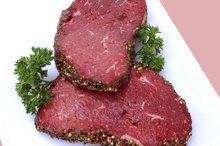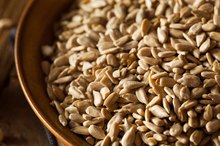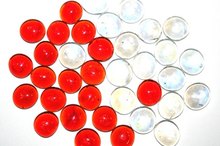Diets For a Person With Polycythemia
Following a special diet can aid in the treatment of a number of chronic diseases, such as diabetes and heart disease. Polycythemia is a rare blood disorder that causes your body to over produce red blood cells, white blood cells and platelets. While no special diet exists to aid in treatment of polycythemia, it is recommended that you eat a well-balanced diet and limit your intake of sodium.
Polycythemia
Each year, only about five new cases of polycythemia in 1 million are diagnosed, according to the University of Iowa. It can affect anyone at any age, but is most commonly diagnosed in men over the age of 60. While some may not experience any symptoms, others may bruise or bleed easily with little or no injury. In addition, the overproduction of red blood cells causes an increase in blood volume, which can lead to an enlarged spleen or liver. The aim of treatment for polycythemia is to decrease blood volume. Treatment depends on your age and medical condition, and includes phlebotomy, or regular blood draws; chemotherapy or medication.
- Each year, only about five new cases of polycythemia in 1 million are diagnosed, according to the University of Iowa.
- It can affect anyone at any age, but is most commonly diagnosed in men over the age of 60.
Balanced Diet
How to Remove Excess Iron in Blood
Learn More
Maintaining a balanced diet is important for weight maintenance for people with polycythemia. A balanced diet aims to provide you with the right amount of calories, protein, vitamins and minerals your body needs to function properly while maintaining a healthy weight. Your doctor or dietitian can help you determine your individual needs. In general, a balanced diet includes a variety of nutrient-rich foods from each of the food groups, including fruits, vegetables, whole grains, lean proteins and low-fat dairy foods.
- Maintaining a balanced diet is important for weight maintenance for people with polycythemia.
- A balanced diet aims to provide you with the right amount of calories, protein, vitamins and minerals your body needs to function properly while maintaining a healthy weight.
Low-Sodium Diet
In addition to eating a balanced diet, you also need to watch your intake of sodium. Your increased blood volume also increases your risk of high blood pressure. Limiting your sodium intake can help you better manage your blood pressure. The first step in reducing your sodium intake is to stop adding salt to your food during cooking and at the table. Secondly, you should limit your intake of high-sodium processed foods, such as bacon, deli meat, sausage, frozen meals, salty chips and soup. Instead, include more fresh, whole foods prepared at home with salt-free seasonings.
- In addition to eating a balanced diet, you also need to watch your intake of sodium.
Concerns About Iron
What Causes a Low Blood Count?
Learn More
If you undergo phlebotomy as your form of treatment for polycythemia, you may worry about iron deficiency. However, while your blood may be lower in iron than normal, people with polycythemia do not suffer from the typical signs of iron deficiency, according to an article published in the "Journal of the American Society of Hematology." In addition, inducing a chronic state of iron-deficiency can help people with polycythemia by decreasing blood production.
Related Articles
References
- University of California at San Francisco: Guidelines for a Low-Sodium Diet
- "Journal of the American Society of Hematology"; Polycythemia Vera: Myths, Mechanisms and Management; Jerry Spivak; August 2002
- McMullin MFF, Mead AJ, Sahra A, et al. A guideline for the management of specific situations in polycythaemia vera and secondary erythrocytosis: a British Society for Haematology guideline. Br J Haematol. 2019 Jan;184(2):161-75. doi:10.1111/bjh.15647
- Assi TB, Baz E. Current applications of therapeutic phlebotomy. Blood Transfus. 2014 Jan;12(Suppl 1):s75-83. doi:10.2450/2013.0299-12
Writer Bio
Jill Corleone is a registered dietitian and health coach who has been writing and lecturing on diet and health for more than 15 years. Her work has been featured on the Huffington Post, Diabetes Self-Management and in the book "Noninvasive Mechanical Ventilation," edited by John R. Bach, M.D. Corleone holds a Bachelor of Science in nutrition.









